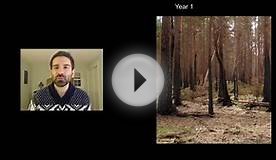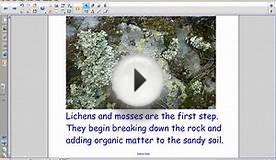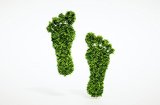Ecological succession activities
 >Watchable Wildlife
>Watchable Wildlife
>Tips for Success
Ecology
Wildlife Species
Sponsors
Watchable Wildlife.org
Pure Michigan
Succession: Changing Land, Changing Wildlife
To an ecologist, the term succession refers to the predictable changes that occur in the plants and animals that live in an area over time. See how these changes affect an abandoned Michigan farm field. (interactive version)
Originally, this farm field was a deep forest filled with towering beech and maple trees. Stage 1. Over time the forest was cleared for farming, bringing about major changes to the kinds of plants and wildlife that could live here. Stage 2. After several years of farming, this field was abandoned. For the next few years, annual weeds, grasses, wildflowers, and other plants invaded the bare soil, creating habitat for mice, meadowlarks, and other open- field wildlife. Stage 3. Eventually, shrubs and small trees seeded into the field. As these new plants grew, their leaves and outstretched branches shaded out the smaller plants below, creating a different kind of habitat. Chipmunks and robins were among the animals attracted to this new habitat. Stage 4. Over time, oak and hickory trees grew tall and shaded out most of the shrubs, creating forest habitat once again. Squirrels and wild turkey replaced chipmunks and robins. Beech and maple seedlings grew much faster in the shade, and soon stretched above the others. As the original oak and hickory trees died and fell, the spaces they left in the forest canopy were filled by beeches and maples growing up from below. Stage 5. More than 200 years after this forest was first cleared for farming, it returned to beech-maple forest again through the process of succession. For this location, beech-maple forest is the "climax community" the association of plants and animals that will remain stable until disturbed by an outside force such as fire, wind, disease, or human activity.Different regions of the world support different kinds of climax communities, including deserts, prairies, and rainforests.
Biologists use this understanding of succession to manage wildlife populations. The endangered Kirtland's warbler, for example, will only nest in stands of young jack pine trees. Periodic wildfires once maintained this habitat, but when humans suppressed fires, Kirtland's warblers had nowhere to nest and nearly became extinct. Today, in Kirtland's warbler habitat areas, managers use clearcutting and prescribed burning to prevent succession from occurring—to maintain the young jack pine habitat that the warblers and other kinds of wildlife need to survive.
Michigan.gov Home | MI Watchable Wildlife Home | Report Feedback | Wildlife | Ask DNR
Privacy Policy | Link Policy | Accessibility Policy | Security Policy


|
Is your lunch causing global warming? Cars and factories are major sources of greenhouse gas emissions that are heating up the planet. But what you ... An article from: New York Times Upfront Book (Scholastic, Inc.) |

|
Wallmonkeys Ecological Footprint Symbol Peel and Stick Wall Decals (24 in W x 16 in H) Home (Wallmonkeys)
|